FEATURE Southeast Asia's Water Troubles Underscore Climate Threat

SOUTHEAST ASIA – Over the past year, growing environmental threats in Asia have had much to do with water—most importantly rising seas driven by global warming. Southeast Asia is proving to be particularly vulnerable. New studies show that climate change and rising sea levels will threaten the lives of tens of millions of people and much of the wildlife in East Asia sooner than had originally been expected. A recent study referred to by some as a “Doomsday Report” suggests that rising sea levels could flood three times more land than previously predicted. In Southeast Asia, if the study prepared by a United Nations Intergovernmental Panel on Climate Change (IPCC) issued in late September 2019 proves accurate, parts of Ho Chi Minh City and Bangkok could be underwater by 2050. Some scientists caution that these could be “worst case scenarios.” But nonetheless, millions of people in Vietnam’s Mekong Delta could be forced to flee coastal areas. The Mekong, Southeast Asia’s longest river, is where everything may go wrong due to the impact of man-made dams, rising sea levels, deforestation, and droughts that alternate with heavy rainfall. And all of this is exacerbated by climate change. In the meantime, contrary to what might seem common sense, some experts say that due to a combination of these factors the Mekong may someday run dry. READ MORE GLOBAL 2019: The year rainforests burned

GLOBAL – 2019 closed out a “lost decade” for the world’s tropical forests, with surging deforestation from Brazil to the Congo Basin, environmental policy roll-backs, assaults on environmental defenders, abandoned conservation commitments, and fires burning through rainforests on four continents. A recent report covers some of the biggest rainforest storylines for the year. The list isn’t exhaustive, so if there are important things missing, feel free to add them via the comment function at the bottom (visit link to story to comment). A team led by Matt Hansen of the University of Maryland updated their annual tree cover loss dataset and added a new dataset on primary forest loss, a breakthrough development for monitoring global forests. According to the data, the tropics lost around 12 million hectares (around 46,300 square miles) of tree cover last year, of which 3.64 million hectares was primary forest, the most biodiverse and carbon-dense type of forest. 2018’s tree cover loss was down nearly 30 percent from its 2016 high, but 2019 may well break that record given the extent of forest fires across the Amazon, Indonesia, and Africa this year. READ MORE AFRICA Nigerian communities struggle with devastating oil spills

NIGERIA – Martha Alfred used to harvest 20 bags of cassava each year before an oil spill forced her to abandon her field and hawk roasted fish to survive. Her smallholding at Ikarama-Okordia, a community in southern Nigeria's Bayelsa state, became unfit for growing crops after crude from a nearby Shell facility spewed into the environment last August, she says. Today, the 33-year-old mother of two looks angry and helpless, her woes compounded by downpours during the last rainy season that flooded her land. "The soil has become infertile because of the spills," Alfred told AFP. "Each time I remember the spills and now the floods, my heart bleeds," she said. "People from Shell came and promised to do something for me. Up until now I have not heard from them." Ikarama-Okordia, a collection of villages, is one of the most polluted sites in the oil and gas-rich Niger Delta. READ MORE South Sudan Oil Spill Causes Environmental Damage, Health Problems

SUDAN – Two months after a pipeline ruptured and spilled crude oil over a wide swath of South Sudan's former Unity State, residents and government officials are grappling with a new pipeline break and the subsequent impact of leaks on public safety and the environment. In the latest incident, residents said oil leaked at Kailoy, about 10 kilometers west of the Unity Oil Field. They said it caught fire Dec. 21 and burned for two days, sending thick plumes of smoke into the air. The Chinese Greater Pioneer Operating Company (GPOC) owns and operates the field. Area residents said they were concerned about the failure of oil companies to detect spills and their inability to put out the fires that the residents said were likely started by nearby charcoal makers. READ MORE AMERICAS Cuba Considers Mangroves to Fend off Rising Sea Level
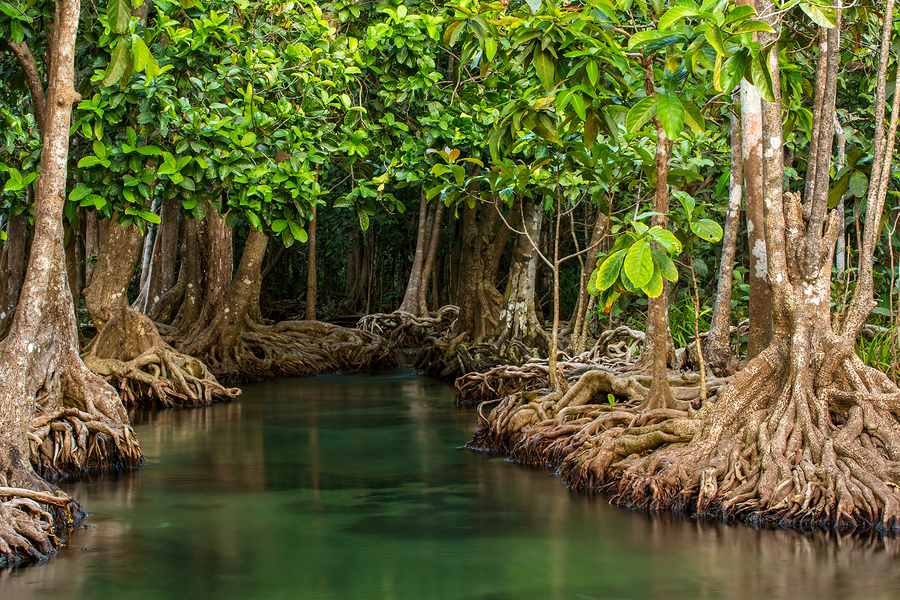
CUBA – Many people in this hamlet on the southern coast of Cuba remember when the shore lay about 100 meters (yards) farther out. That was four decades ago. Since then, rising waters have gradually swallowed up rustic homes, a narrow highway that once paralleled the coast, even an old military tank that people now use to measure the sea’s yearly advance. “There was a road there,” said Jose Manuel Herrera, 42, a fisherman and former charcoal harvester, pointing toward the gentle waves. “You could travel from here all the way to Mayabeque.” Worried by forecasts of rising seas from climate change, the effects of hurricanes and the salinization of farmlands, authorities say they are beginning a forced march to repair Cuba’s first line of defense against the advancing waters – its mangrove thickets, which have been damaged by decades of neglect and uncontrolled logging. READ MORE Reckless rule change will drown more than 1,000 sea turtles a year

USA – The disturbing level of harm the shrimp fishing industry causes to other marine life has long been known. Even conservative estimates suggest that on average shrimp trawlers routinely kill and discard about three pounds of unintended “by-catch” for every pound of shrimp they haul in. Included in that carnage are thousands of sea turtles that drown every year along the Gulf and Atlantic coasts while being dragged to their deaths in shrimp nets. That’s why federal fisheries officials drafted, but never finalized, a plan three years ago to make several thousand shrimpers, whose smaller boats trawl waters close to shore, install escape hatches called turtle excluder devices or “TEDs” in their nets. The 2016 proposal to require TEDs on approximately 5,800 additional shrimp trawls was projected by scientists to save the lives of more than 2,400 sea turtles every year. But recently, in an abrupt change of course, the National Oceanic and Atmospheric Administration under President Donald Trump suddenly announced it would dramatically scale back that proposal. The severely gutted plan will now only require the turtle-saving devices on fewer than 1,100 shrimp boats trawling coastal waters from Texas to North Carolina by 2021. The much less-protective scheme is projected to cut by more than half the number of turtles saved. READ MORE ASIA Editor's Note: We are running this piece because it shows the government sort of self-condemns its own past actions and we can see the weaknesses in its future plans. For one thing, why were these old shrimp ponds abandoned in the first place? Were they abandoned because of disease and pollution issues? Also, how will attempts at reviving these abandoned ponds help conserve the mangroves unless strict enforcement of intended mangrove protection measures are followed, which based on recent history tin Indonesia is not at all likely. The thing about this article that boggled my mind are the photos of the vast array of shrimp ponds. I still am taken aback by such images, and even after so many years of working on these issues am dumbstruck (up to a point!) by such wanton destruction of the coastal areas for such a short-lived profit-making!
Indonesia to revive idle shrimp farms to boost fisheries and save mangroves

INDONESIA – Indonesia plans to restore more than 300,000 hectares (741,300 acres) of idle shrimp-farming ponds to boost its fisheries and reduce deforestation of the country’s mangrove ecosystems, according to a top official. More than double that area, much of it in coastal regions rich in mangroves, have been cleared for shrimp farms, but only about 40% of the farms are in production, according to 2018 government data. “We must revitalize this area that’s abandoned or poorly managed … over the next five years,” Alan Koropitan, a senior expert in the office of the president’s chief of staff, told Mongabay on the sidelines of an event in Kuta, Bali. He said rebuilding shrimp farms on these idle lands could give a much-needed boost to the Indonesian fisheries sector. While Indonesia is a top global exporter of frozen seawater shrimps, the Southeast Asian country lags behind its neighbors in exports of freshwater shrimps and fresh, salted or smoked shrimps. Some of its top seafood exports include Asian tiger shrimp (Penaeus monodon) and whiteleg shrimp (Litopenaeus vannamei). “But we don’t want to clear more land either [for shrimp farms] by clearing mangroves and such,” Alan said. READ MORE Big aquaculture bulldozes Borneo
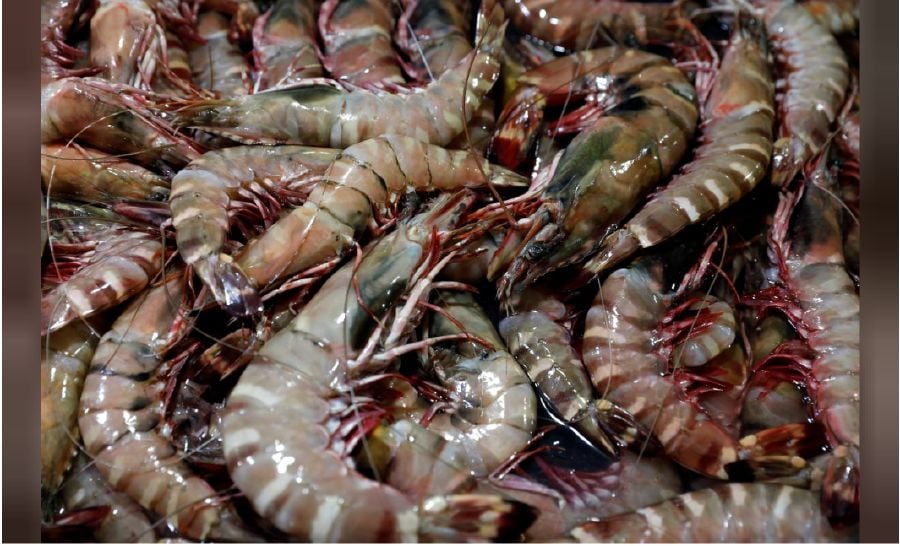
MALAYSIA – Swinging his machete with an economy of movement that only the jungle can teach, Matakin Bondien lopped a stray branch from the path of his boat. He hopped barefoot from the prow, climbed a muddy slope and stared once more at what he’d lost. Not long ago, the clearing had been home to mangroves, saltwater-loving trees that anchor a web of life stretching from fish larvae hatching in the cradle of their underwater roots to the hornbills squawking at their crown. Now the trees’ benevolent presence was gone, in their place a swath of stripped soil littered with felled trunks as grey as fossils. “Do you think we can find any food in this place now?” asked Bondien, a village leader of the Tombonuo people. “The company thinks it can do anything it wants — that we don’t count.” The company is Sunlight Inno Seafood. Owned by Cedric Wong King Ti, a Malaysian businessman known as “King Wong,” it has bulldozed swaths of mangroves in the Tombonuo’s homeland in northern Borneo to make space for plastic-lined ponds filled with millions of king prawns. The shrimp are destined to be fattened for three months, scooped up in nets, quick frozen, packed into 40-foot refrigerated containers and loaded onto cargo ships bound for distant ports. READ MORE Learn from our past
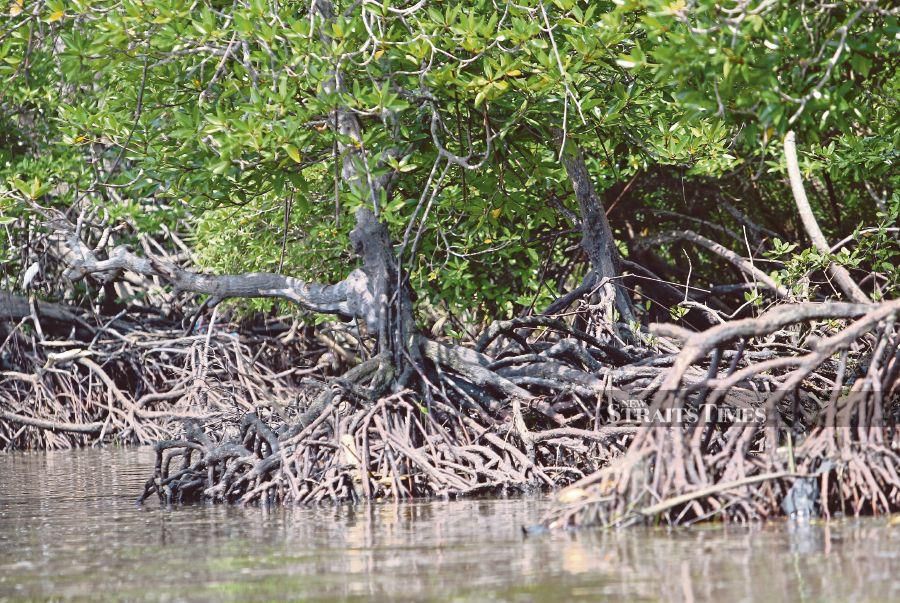
MALAYSIA – Mangroves are making the headlines again in the continuous conflict between development and the preservation of nature. The survival of a stretch of mangroves and mudflats near Penaga and Kuala Muda is under threat by the proposal from the Penang Aquaculture Industrial Zone. In neighbouring Kedah, the mangroves of Sungai Merbok are declining fast, due to the clearing of mangrove forests to make way for shrimp farming, housing and other developments. Bear in mind, these were the worst-impacted sites in Peninsular Malaysia during the Boxing Day tsunami that happened exactly 15 years ago. The scars of the natural disaster can still be seen and the emotions are still felt by the locals, but sadly, we never learn. The mangroves of Penaga and Kuala Muda have played an instrumental role in protecting the coastline and the surrounding communities from the immediate effects of winds and waves from the Straits of Malacca. Besides, both these areas are primary stopovers for seasonal migratory birds and are home to a large diversity of plants and marine fauna. READ MORE 6,000 ha of mangrove forests in southern Iran undergo restoration
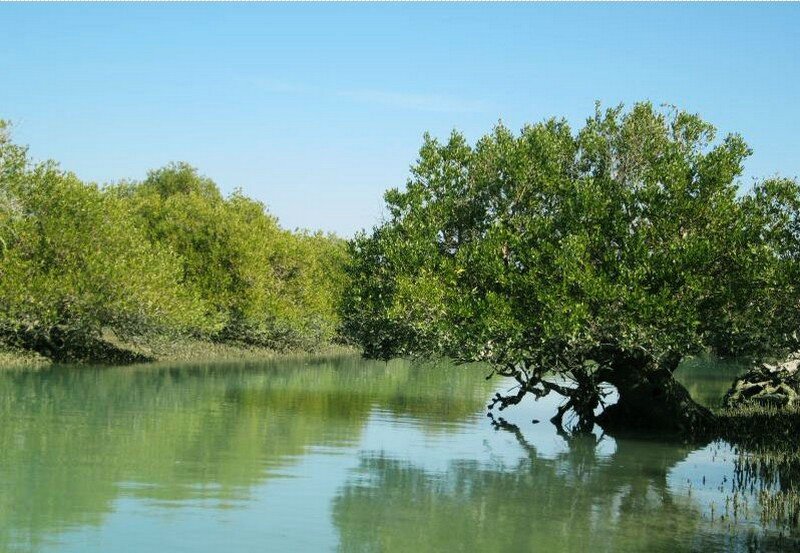
IRAN – The mangrove forests or Hara forests are located on the southern coast of Iran, particularly on and near the island of Qeshm in the Persian Gulf. Dominated by the species Avicennia marina, known locally as the "hara" or "harra" tree, the forests represent an important ecological resource. The "Hara Protected Area" on Qeshm and the nearby mainland is a biosphere reserve where commercial use is restricted to fishing (mainly shrimp), tourist boat trips, and limited mangrove cutting for animal feed. The area is a major habitat for migratory birds in the cold season, and for reptiles, fish, and varieties of Arthropoda and bivalves. Green (or hooked) turtles and venomous aquatic snakes are also indigenous to the forests. Birdlife includes herons, flamingos, pelicans, and angler eagles. Another important feature of these forests is the appropriate and suitable seabed conditions for the ovulation of fish in the Persian Gulf. Unique mangrove forests are under the special protection and conservation of the Ramsar Convention on Wetlands while being controlled by the FRWMO, IRNA quoted Kamran Pour-Moghaddam as saying. READ MORE Authorities seize Rp 12 billion worth of mangrove charcoal
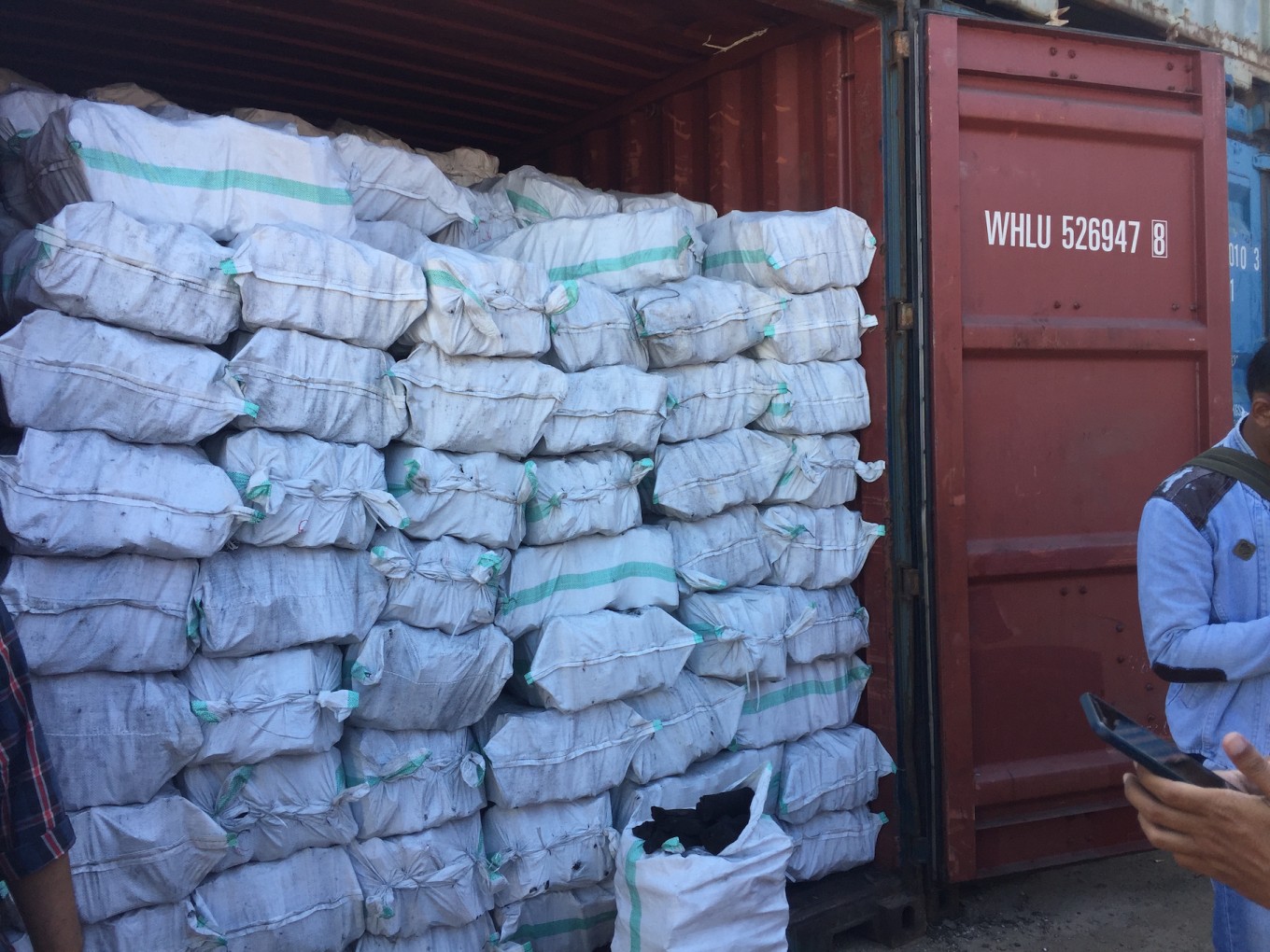
INDONESIA – Three containers of mangrove charcoal worth around Rp 12 billion (US$ 860,000) were confiscated from a vessel in waters near Batam, Riau Islands, on Wednesday. Rear Adm. S. Irawan, secretary of the Maritime Security Agency (Bakamla), which confiscated the charcoal, told The Jakarta Post on Dec. 27 that the agency would strengthen its surveillance of mangrove charcoal exports following the issuance of an export limit regulation by the Environment and Forestry Ministry. The ministry designated Batam a mangrove conservation zone in June, which limits the amount of mangrove charcoal exports. “During Christmas, two corporations tried to export three containers of mangrove charcoal worth Rp 12 billion to Singapore and China,” Irawan said. He added that, based on Bakamla data, more than 38 containers of mangrove charcoal were shipped to Singapore each month. Mangrove charcoal is popular among restaurants and families for its low-moisture content and various other characteristics. READ MORE OCEANA Australia bushfires taking toll on public health/nature

AUSTRALIA – Warning of the devastating effects of the super fires on wildlife, Pep Canadell, a scientist at the Climate Science Centre of Australia said it will destroy habitats, leading to many species suffering long-term falls in populations. "As a key species, koalas’ habitat, which has been reduced over the decades, have seen the most rapid and devastating reduction during these fires in New South Wales and South Queensland," he said. "Over the past 10 years we have seen the collapse of a series of ecosystems with no precedent in the recorded history of the nation," Canadell, said, stressing Australia’s position at the front line of climate change. They include the collapse of mangroves, the breakdown of Kelp forests, and the burning of alpine forests in Tasmania. On the Australian government's stance on climate change, he said that there have been some positive policies, but much more needs to be done, such as moving away from the use of coal, as Australia is far behind the goals of the 2016 Paris Agreement."Climate scientists warned us of these impacts of climate change. And we are experiencing much of what they warned us about," Glen Klatovsky, deputy CEO and campaign strategist at 350 Australia, told Anadolu Agency by e-mail. READ MORE
Like this newsletter?
Pease consider donating to MAP to keep it going.
Giving could never be easier | ACTION ALERTS Enough! Pledging zero tolerance to attacks against environmental and human rights defenders. SIGN THE PETITION Stop plundering the oceans for industrial aquaculture! SIGN THE PETITION TROPIMUNDO 2020-2021 applications are now open TROPIMUNDO is an EC-funded and excellence-labelled Erasmus Mundus Joint Master Degree in Tropical Biodiversity and Ecosystems. MORE INFO PETITION – NO new coal power – protect local people and wildlife!
SIGN OUR PETITION PETITION – Help stop the advance of oil palm plantations in Gabon!
SIGN THE PETITION PETITION – Don't trash coral reefs for the cruise industry! – TAKE ACTION PETITION – Sea turtles or condominiums?
Sand mining and construction work would wipe out a marine biodiversity hotspot and destroy the livelihoods of local people, who have not been consulted. Please SIGN! PETITION – Save Penang! Reject the 3-Islands Reclamation!
The lack of public consultation and detailed information about the project is shocking in view of the size of proposed reclamation which is 4,500 acres or 7 square miles
PLEASE SIGN
PETITION – Save Pulau Kukup National Park – second largest mangrove island in the world. Sign The Petition Like this newsletter? Pease consider donating to MAP to keep it going. Giving could never be easier 
69 million tons of carbon stored thanks to mangrove restoration, as demonstrated by the new Mangrove Restoration Map VIEW MAP HERE 
Restoring The Natural Mangrove Forest
Watch movie 
Community Based Ecological Mangrove Restoration in Rufiji Delta VIEW VIDEO Video: Mangroves for the Future – A look bacK. As the latest phase of Mangroves for the Future (MFF) draws to a close, this video highlights some of the project’s most successful initiatives – from local women supporting national park management in Viet Nam to an island in the Maldives that has become a model for waste management, and everything in between. View Here WANT TO GET INVOLVED?
Follow and Join MAP!
   
Like this newsletter? Pease consider donating to MAP to keep it going. Giving could never be easier 

VOLUNTEER OPPORTUNITY 
MANGROVE ISSUES Want to learn more about mangroves?
Our short presentation will give you a better understanding of the issues we are working to solve. WATCH PRESENTATION What is CBEMR? Easy to follow fact sheet – CLICK HERE What is EPIC? – The Ecosystems Protecting Infrastructure and Communities (EPIC) project: the role of ecosystems as protective barriers against climate induced hazards MANGROVES APP AVAILABLE
A pictorial field guide for easy identification of various mangrove species and learning about the mangroves ecosystem. CLICK HERE View MAP’s uploaded Videos at MAPmangrover’sChannel
Question Your Shrimp Consumer/Markets Campaign!
WATCH VIDEO Mangrove Restoration in Asia – Watch Short Video The Value of Mangrove Forests View Video CBEMR Experience Exchange MAP 2017 English Subtitles
VIEW THE VIDEO Mangroves: Guidebook to Malaysia – Click Here
Mangrove rehabilitation in Asia – Local Action and cross-border Transfer of Knowledge for the Conservation of Climate, Forests and Biodiversity VIEW VIDEOS HERE SHARE MAP'S VISION
CLICK HERE to watch short introductory video. Together we can work "at the roots of the sea". Our short documentary, Reducing the Risk of Disaster through Nature-Based Solutions : Mangroves

Exclusive Interview with Alfredo Quarto, Co-Founder and Executive Director of Mangrove Action Project – See more
Marvellous Mangroves Curriculum The Marvellous Mangroves Education Forum is an online hub for those utilizing the Marvellous Mangroves (MM) Curriculum. It gives students, teachers and anyone interested in mangroves, the opportunity to learn and share ideas themed around the curriculum, to connect and communicate with others around the globe whilst exploring mangroves from your computer or on the go. VISIT 
The award-winning Marvellous Mangroves (MM) curriculum educates children on the importance of mangroves and their ecological functions, teaching them about modern challenges and mechanisms for sustainability. VIEW VIDEO Marvellous Mangroves Curriculum in Bangladesh – WATCH VIDEO
MARVELLOUS MANGROVES IN BRAZIL
En Portuges 
Marvellous Mangroves – A Curriculum-Based Teachers Guide. FOR MORE ON MAPs AWARD WINNING CHINA MANGROVE CURRICULUM VISIT

VIMEO SHOW
VISIT OUR "MM" WEBPAGE Check out our presentation for more details on Marvellous Mangroves Read this 10 page history of the development of MAP’s educational curriculum VIEW DOCUMENT
Article in Canada's Green Teacher Magazine – Read More
Like this newsletter? Pease consider donating to MAP to keep it going. Giving could never be easier 
Green Planet Fundraising Assists MAP – LEARN MORE
Volunteer Opportunities with Mangrove Action Project CLICK HERE
"Question Your Shrimp" Campaign Question Your Shrimp- Don't Buy or Sell Imported Tropical Shrimp! Sign the Petition Learn more about the affects of the shrimp industry on mangroves by visiting our blog
Editor’s Note: Mangrove Action Project’s Executive Director, Alfredo Quarto was interviewed about shrimp by Green Acre Radio’s Martha Baskin
LISTEN TO INTERVIEW Sign the Consumer's Pledge to avoid imported shrimp
Not yet a MAP News subscriber?
Click here to subscribe. Note to Our Readers: We strive to keep active links in our newsletter. However, due to circumstances beyond our control, occasionally links to stories may become broken. If you find a link to a story is not functioning, please cut and paste the headline into your browser search bar. In most cases you should be able to locate the original story.
|



























